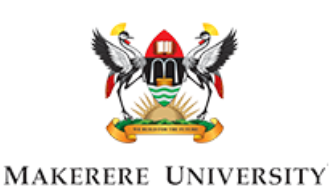|
Modularity and the LMFDB, Aurel Page
Program
Aurel Page will give the central plenary lecture series of this course which will explore the relation between elliptic curves over the rational numbers and classical modular forms in great detail illustrating this topic with mant concrete examples, some of which can be found in the LMFDB.
Background: Linear Algebra and basic Geometry.
|
| The research groups are as follows:
|
Isogeny graphs and the resulting cryptography, Sorina Ionica, Sabrina Kunzweiler
Program
Isogenies are special morphisms between elliptic curves, or more generally between the Jacobians of algebraic curves, in the sense that they preserve the group law. In elliptic curve cryptography, isogenies are employed both for constructing protocols and for studying the security of these protocols. In classical cryptography, the security of curve based schemes is based on the discrete logarithm problem. For example, isogenies may be used to reduce the discrete logarithm problem from the Jacobian of a curve where this problem is hard to the Jacobian of a curve where this problem is easy. In general, for elliptic curves the discrete logarithm problem is hard, but for higher genus curves more efficient algorithms are known. The idea of this project is to compute rational isogenies from a product of elliptic curves to the Jacobian of some higher genus curve defined over finite fields and derive more efficient attacks on the discrete logarithm problem.
In these notes, we collect some theoretical background that is helpful to work on this project.
Background: Basic algebraic geometry and algebraic number theory.
Bibliography:
-
Frey, G., Kani, E.: Curves of genus 2 covering elliptic curves and an arithmetical application.
In: Arithmetic algebraic geometry, pp. 153--176. Springer
-
J. Silverman, (2009). The Arithmetic of Elliptic Curves, Springer: Chapters III, V and XI, in particular Sections XI.4, XI.5, XI.6.
- M. Stoll, (2014). Arithmetic of hyperelliptic curves, Chapters 1, 2 and 4.
|
Abelian varieties over finite fields and their isogeny classes, Stefano Marseglia Program
Some of the most extensively studied objects at the intersection of number theory and algebraic geometry are abelian varieties, which are projective varieties whose points form a group. Abelian varieties have a very rich algebraic structure which makes them fundamental tools for understanding the geometry and arithmetic of curves through their Jacobians and they constitute the geometric background of some integrable systems. Moreover, abelian varieties of dimension 1, also known as elliptic curves, defined over finite fields are the basis for some of the most secure and used cryptosystems.
Two abelian varieties are called isogenous if there is a surjective morphism with finite (as a group scheme) kernel from one to the other. Being isogenous turns out to be an equivalence relation. Honda and Tate proved in a series of papers that each isogeny class of abelian abelian varieties over a finite field is uniquely determined by a polynomial with integer coefficients, called Weil polynomial. By exploiting the properties of these Weil polynomials, one can enumerate all isogeny classes of abelian varieties of a given dimension over a fixed finite field. For example, the LMFDB contains a list of all Weil polynomials associated to the isogeny classes of abelian varieties up to dimension 5 over several finite fields.
In this project, the students will study the theory behind such Weil polynomials and experiment with the data contained in the LMFDB.
See notes, for brief descriptions, topics to be covered as well as references that are helpful in order to work on this project.
Background: Basic algebraic geometry and algebraic number theory.
Bibliography:
-
[Milne] Milne - online notes on Abelian Varieties, available at https://jmilne.org/math/CourseNotes/AV.pdf
-
[Waterhouse] Waterhouse - Abelian varieties over finite fields, Annales scientifiques de làÈ.N.S. 4e serie, tome 2, no 4 (1969), p. 521-560 Available at http://www.numdam.org/article/ASENS_1969_4_2_4_521_0.pdf
-
[LMFDB] Taylor Dupuy, Kiran Kedlaya, Christelle Vincent - Isogeny Classes of Abelian Varieties over Finite Fields in the LMFDB,
Arithmetic Geometry, Number Theory, and Computation, Simons Symp, Springer, 2021, pp 375-448
available at https://math.mit.edu/~roed/writings/research/avfq.pdf
|
The Sato--Tate and Galois representations, David Kohel and Leonardo Colò
Program
This research project will focus on Galois representations associated to arithmetic geometric objects, with a view to understanding the Sato - Tate group of an elliptic curve - a projective curve with a structure of abelian group - and its generalization to higher genus curves and abelian varieties - higher
dimensional analogues of elliptic curves. Arithmetic statistics can be summarized as the counting or enumeration of arithmetic objects "up to a certain bound". Examples of results in this field are the study of the average rank of elliptic curves. Another main topic, explored in the LMFDB, is the Sato--Tate conjecture and the resulting distribution of traces of Frobenius of algebraic curves modulo various primes of good reduction. This research group introduces the topic, describes its main results, as well as various
open directions that can be pursued further. In notes, we give a brief description of objects of study as well as the references that are helpful to work on this project.
Background: Basic algebraic number theory and theory of elliptic curves.
References:
- D. A. Marcus, Number fields, Universitext, Springer, 2018.
This is a first introduction to number theory, covering prime decomposition, the Frobenius automorphism and Galois actions, and class and unit groups.
- For an extensive list of references, see notes
|
L-functions and Galois representations associated to elliptic curve, Ahmad El-Guindy, Barinder Banwait
Program
L-functions provide a fruitful way of "packaging local information" about elliptic curves (as well as a variety of other mathematical objects) into a function whose analytic properties capture a lot of arithmetic information. In particular, this research group will explore the original computations of Birch and Swinnerton-Dyer (using a precursor of the L-function) which led them to formulate their conjecture, which is currently one of the outstanding open problems in number theory. We will also explore the connections between L-functions and Galois representations, which are another crucial theme in modern number theory which provide a bridge between algebraic and analytic considerations by studying the action of the absolute Galois group on certain points and modules obtained from the elliptic curves. The aim will be to encourage students to explore these themes through concrete examples and computations using the LMFDB and various computer algebra packages.
In these notes, we collect some theoretical background that is helpful to work on this project.
Prerequisites:
Knowledge of elementary number theory as well as a working knowledge of the basics of representation theory.
References:
- "Conics- A poor man's elliptic curve" by F. Lemmermeyer:
This paper provides a useful survey highlighting the parallels between the study of elliptic curves using L-functions and BSD and the corresponding study
of the so-called Pell conics, which are more familiar objects being plane quadratic curves
- "Numerical investigations related to the L-series of certain elliptic curves" by D. Zagier and G. Kramarz:
This paper provides an intriguing numerical investigation of the distribution of ranks within a certain family of elliptic
curves relying on the BSD conjecture. The results are somehow surprising and highlight some tension between the expected asymptotic behavior of
the distribution of ranks and some computations. This is an interesting theme which is always important to consider regarding the size of the
data set one needs to make reliable predictions, and it continues to inspire advancements both in research and computations.
- Chapter 9 of Diamond and Shurman's A first course in modular forms, for the basic definitions
- Serre's Abelian l-adic Representations and Elliptic curves specifically for the case of elliptic curves
- Sutherland's Computing images of Galois representations attached to Elliptic curves for the more computational aspects of the subject
|
Artin-Schreier curves , Fabien Pazuki, Elisa Lorenzo García and Beth Malmskog
Program
During the first week, we will get familiar with the needed notions around algebraic curves that we will need for the project:
genus, morphisms, ramification points, Riemann-Hurwitz theorem, superelliptic curves, Artin-Scheier curves, curve invariants, and
reduction types of curves. For the first part, a good reference would be the notes by Christophe Ritzenthaler, as well as the paper
[3] by the group leaders and their coauthors.
During the second week, we will work on the following research project: Given a Picard curve y^3 = f(x) with f a polynomial with integer coefficients such that deg(f ) = 4, what are the possibilities for its reduction type at a
prime p different from 3? How can we characterise these possibilities in terms of valuations of invariants? This is partially answered in [2] and [1].
To see what happens at p = 3, we need to deal with Artin-Scheier curves. The ideas in the paper [4] for curves of the type y^2 = f (x) and p = 2 may be useful,
as well as the ideas in [5]. Can we generalise these previous results to any curve y^3 = f(x) with no restriction on the degree of f?
Background: basics on algebraic curves, morphisms, divisors, like in the notes at https://ritzenth.pages.math.cnrs.fr/web//cours/main.pdf.
References:
- I. I. Bouw, A. Koutsianas, J. Sijsling, and S. Wewers. Conductor and discriminant of Picard
curves. arXiv:1902.09624.
- M. Borner, I. I. Bouw, and S. Wewers. Picard curves with small conductor. arXiv:1701.01986.
- J. Duque-Rosero, H. Goodson, E. Lorenzo Garcia, B. Malmskog, and R. Scheidler. On
invariants of Artin-Schreier curves. arXiv:2401.08843.
- T. Gehrunger and R. Pink. Reduction of Hyperelliptic Curves in Residue Characteristic 2.
arXiv:2404.14214.
- M. Matignon. Vers un algorithme pour la reduction stable des revetements p-cycliques de la droite
projective sur un corps p-adique. arXiv:0112042
- C. Ritzenthaler. Effective geometry and arithmetic of curves: an introduction. Available online
|
|



